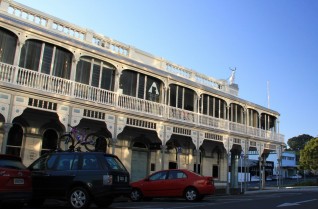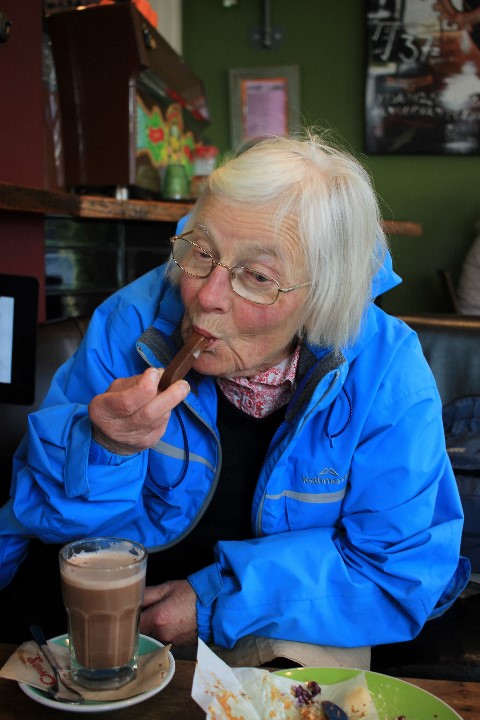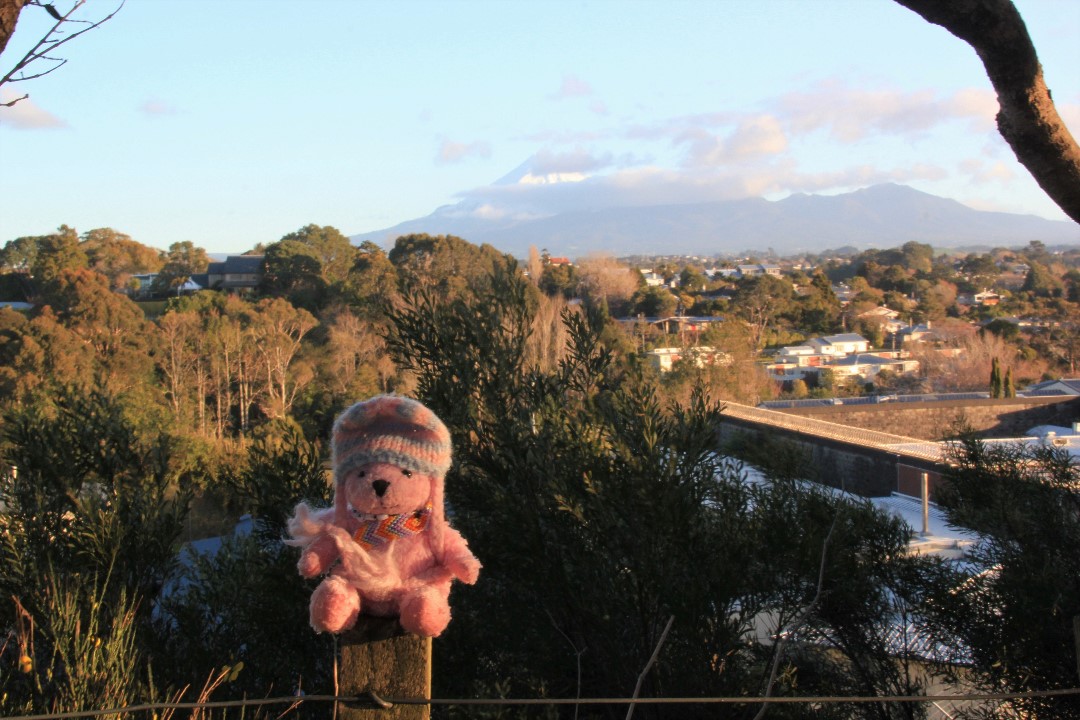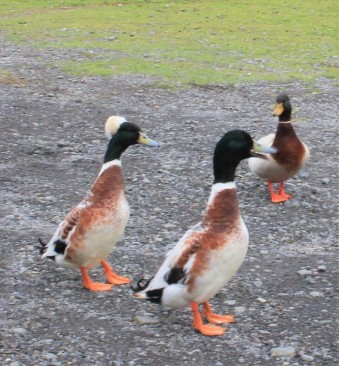Okay, first bit of good news. I have a job. I’ve had it for almost two months, and they’re a great bunch of people to work with. Second bit of good news is that, as she’s a volunteer at the hydrotherapy pool at the hospital, my mother’s had both of her Covid-19 inoculations. I’m in group four, the low risk group, so I won’t be getting mine until late July or August.
But that’s not what’s exciting. I’m going to tell you about something even more important. Saturday 30th May, I met a New Zealand icon.

One thing I’d like to say here. If you call the brown, feathery fruit with green – or occasionally gold – or now, I think, red flesh, a “kiwi”, you can change your linguists now. That is a kiwifruit – said and spelt with one word – like passionfruit. A kiwi is the colloquial term for a New Zealander; a member of the men’s national rugby league side; our currency; or a bird that is more like a mammal than something with feathers.

At this point I’ll also point out that kiwi is a Māori word, and that, because the Māori alphabet doesn’t include the letter S, the plural of kiwi: is kiwi.
Another fact about the kiwi, is that its nostrils are at the tip and not the base of its beak, which makes it different from most other birds. (“All the better to smell you… erm… worms and other soil-based invertebrates, with.”) Technically, because the length of a bird’s bill is measured from its nostrils to its tip, this gives the kiwi the shortest bill for the bird’s size of any species. Don’t you love science?
Remember that New Zealand is a land largely free of mammalian species, with the only land mammals being two species of bats. As a result, New Zealand’s animals evolved to fill the niches that mammals fill in other parts of the world. They also evolved to be unlike their original, ancestral, forms. The kiwi is nocturnal with a keen sense of smell and whiskers to help it feel its way about. It’s flightless, so its wings are almost non-existent. And its feathers are almost more like hairs than the traditional feathery appendages.

It’s the male that broods the egg. (Do you blame the mum? When you’ve laid an egg that’s equates to 15% to 20% of your body mass; and takes up so much space that you’d fast the last few days before laying because you had no room left for food; you’d want to take a break too.)
Kiwi do have large claws and powerful legs, which, when it’s old enough, gives it something to fight back with.

But, because of its lack of flight muscles and associated strong skeleton, doesn’t have the chest strength to withstand even the most gentle grip – of, say, a pet dog. Chicks are especially vulnerable to predation by introduced mammalian pests like rats, stoats, ferrets, and possums, which means that, without the work of groups like TCKC, the bush was filled with an increasingly aging population.
They are remarkable – and endangered.
Now for a bit of more recent and human history. How did this wonderous day happen?
I’m on the committee of our local branch of the Royal Forest and Bird Protection Society – aka Forest and Bird. We decided to donate some money to a local group who are doing their best to preserve kiwi on the Coromandel Peninsula – Thames Coast Kiwi Care. They were thrilled; which, when you consider that it costs them $70,000/year to do the priceless work that they do, it’s no wonder.
$70,000. It sounds a lot, doesn’t it? But you’ve got to consider what that goes towards. They do pest eradication, using manual methods like trapping and laying bait. They tag the birds with electronic trackers so they can find them. They retrieve eggs so they can be reared in safety. And then they release the chicks again. And they do all this in a hilly, blush-clad area that covers approximately 2,300 hectares. In doing so, they’ve increased the local population from about 80 to roughly 200 birds, which is an amazing achievement, but depressing when you consider the thousands of kiwi that would have originally wandered the Coromandel Peninsula and beyond.
They have had help from the Department of Conservation, but with literally hundreds of worthy, grassroots, volunteer-run organisations in New Zealand, the government department can’t support everyone as much as they deserve. So, the rest of the $70,000 is raised with grants, sponsorship, fundraising (read raffles, concerts, and stalls), and donations from everyday New Zealanders.
So, Thames/Hauraki Forest and Bird donated several hundred dollars to TCKC and, as a thank you, TCKC asked two of our committee members to join them at their last release of the season on the 8th May. It was decided that the two who should attend would be my mother, in her role as the chairperson of the branch, and the treasurer.
This was a real privilege as very few people get to see wild kiwi. I’ve seen them in captivity, and I remember that one of the cutest things that I’ve seen was a kiwi at Auckland Zoo. It was pressed up against the glass barrier having a snooze, with its bill tucked underneath its wing. I tried to get a photo, but there wasn’t enough light. (Remember these are flightless nocturnal birds), so you’ll have to make do with a terrible sketch.

Arrangements were made and, as my mother doesn’t have any transport of her own, the Forest and Bird treasurer said that he’d pick her up on the day.
He forgot.
We were concerned that he’d been ill, especially when we later heard that he was in the hospital, but it turned out that he’d simply forgotten.
Naturally, my mother was disappointed, but resigned to missing out on this once in a lifetime experience.
Then, on the 27th May, I got home from work and she said to me: “listen to the answerphone.”
It was the Thames Coast Kiwi Care saying that they were releasing one additional kiwi on Sunday and that they’d pick my mother up and bring her to the release site, but that the treasurer would have to make his own way there. So, she emailed back and said that she’d love to take them up on their offer, but, as it was the treasurer forgetting that had made her miss out last time, asked if I, as a member of the committee, could go in his place. They were happy about this.
And I did a happy dance.
I wasn’t sure what to wear on May 30th. The weather forecast was for thundery showers, or else showers increasing in the afternoon. It’s also been quite cool lately, since it’s almost winter, and I didn’t know how far we were going to go into the bush. So, I ended up wearing a merino skivvy, wool jumper, rain jacket, merino leggings, merino socks, and polyester slacks. And took my waterproof overtrousers, and poncho for extra rain protection.
And I was too hot whilst I hung around at home, waiting for the magic moment to arrive.
We were picked up at 2.20pm by Joanne Richards, community relations for the Thames Coast Kiwi Care, and taken up the coast to Te Mata Point Reserve to meet the rest of the group.
And Ollie.

We were originally in three vehicles, but packed ourselves into two for the short trip further on. When we got to the end of the rural side road we all piled out and took a short walk over a small bank (taking care to not trip over the remains of some wire fencing) and into a bit of pine plantation.
Then Neil brought in the man of the hour.
In a box.
Neil pulled Ollie out of his travelling carriage and held him gently as we oohed and aahed and took photo after photo.

Neil John – TCKC’s ONE kiwi handler bringing Ollie out of his box.
ONE = Operation Nest Egg
All the time Ollie sat quietly in Neil’s arms (shivering slightly), but as he wasn’t blowing bubbles nor losing his feathers, those in the know were quietly confident that he wasn’t stressed.
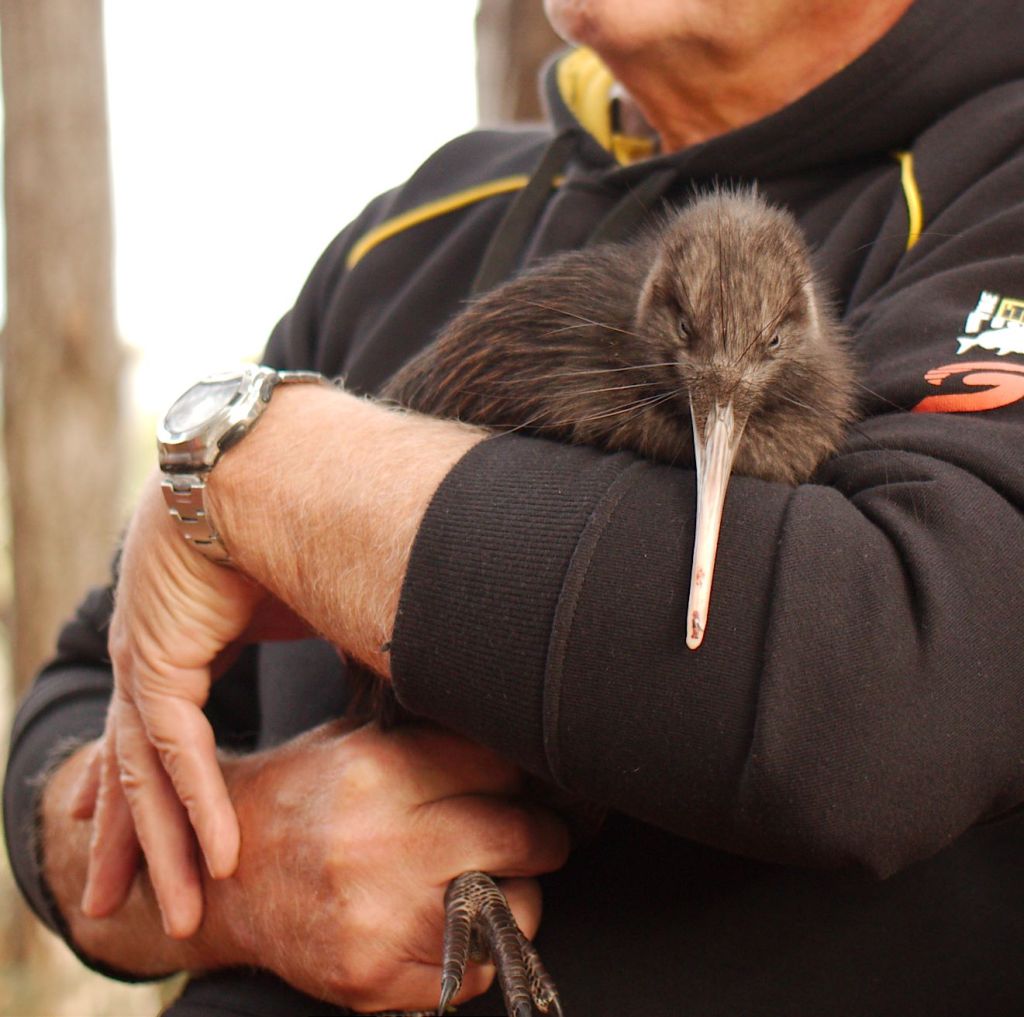
Ollie was supposed to have been released with the others on the 8th, but had banged his bill and developed at blood blister, so they kept him back to ensure that he was in tip-top condition. When he was weighed that morning at Rainbow Springs in Rotorua, he was 1.2kg, which was above the 1kg that they like to release birds at. A weight and size to hopefully be able to fight off stoats and rats.
He’s had quite a journey; this little man. Born on the Coromandel Peninsula, he was taken as an egg to Rainbow Springs where he hatched. After a few weeks, when he was big enough to fend for himself, he was taken to Rotoroa Island in the Hauraki Gulf.
And today, after the detour back to Rainbow Springs, he was going to be released onto his home turf.
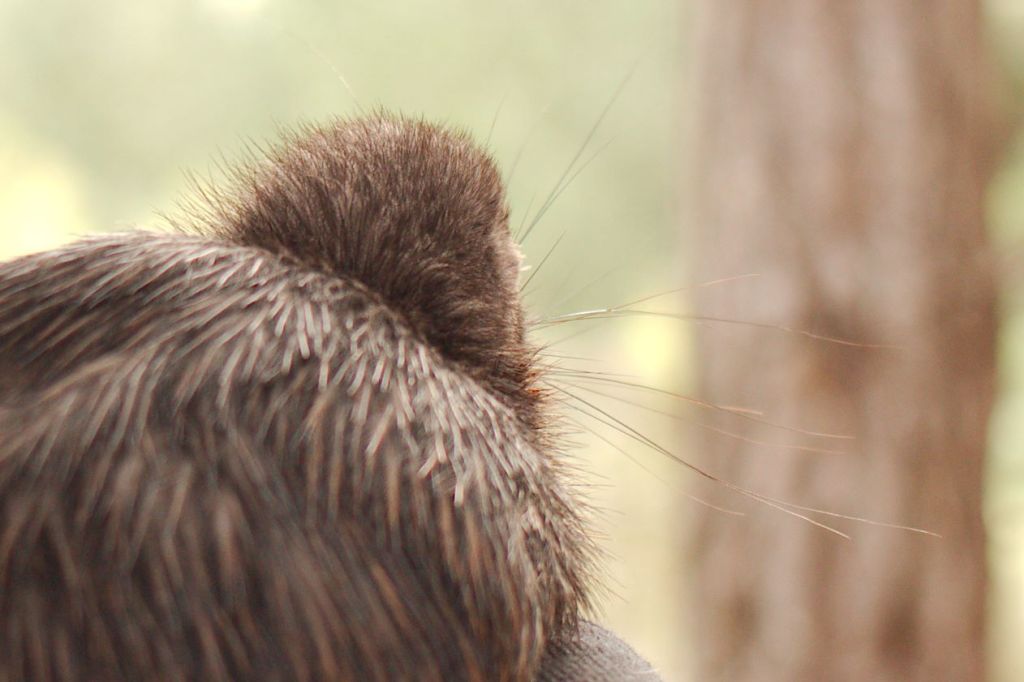
Being nocturnal, Ollie spent most of his time with us with his eyes shut, although he did open them on occasion to check what we were up to. Probably wondered what all the odd clicking noises were.
Finally, it was agreed that it was time for him to be left alone, so Neil put him into the nesting box that most of the other kiwi released were put into. This happened that quickly, that none of us saw Ollie take off; only realising that he’d gone when Neil packed the end of the box with brush to keep the light out.
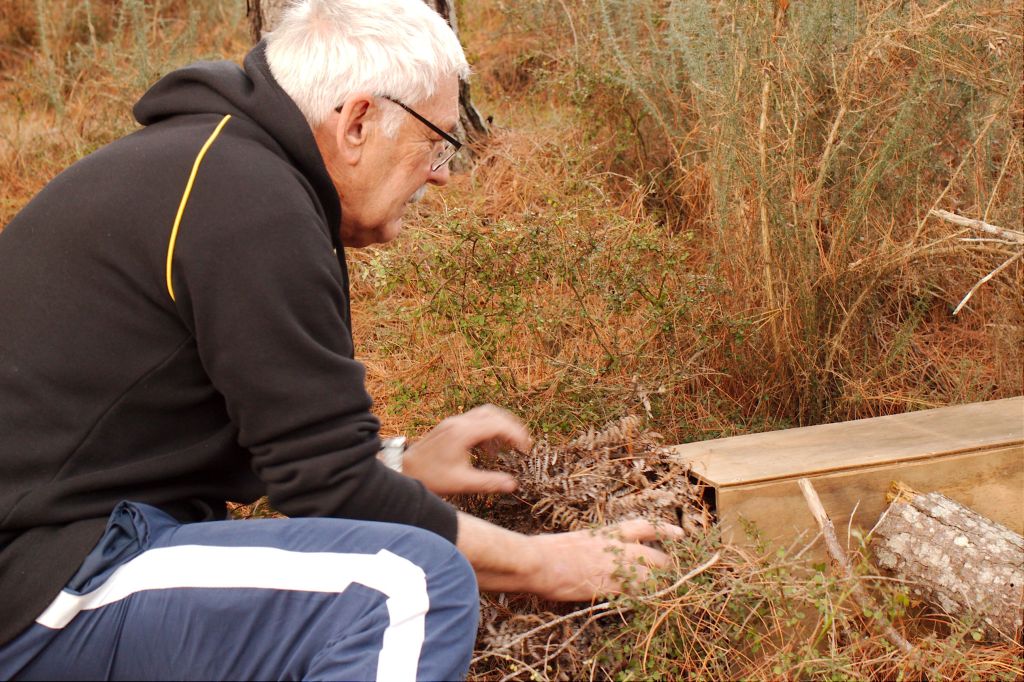
A chance to sleep and recover until it’s time to get up and explore.
And that was that. We wished Ollie good luck in his new (old) home, and returned to the vehicles for the ride back to the reserve.
As we waited for Neil to lock the gate behind us, we could see black clouds raining down on the far side of the firth. It didn’t advance whilst we were having our celebratory chat at the reserve, but started to rain when we were on the ride back into town. We were so lucky. We could have been miserable and damp, and unwilling to get our cameras wet, but, instead, we were warm and dry, and all of us, especially Ollie, happy.

Thanks to everyone involved with the TCKC for a wonderful, memorable afternoon. To learn more about their work you can go to their facebook page and web site:
https://www.facebook.com/TCKCWeLoveKiwi/
Home

NO! You can’t pat him, D.C.

I won’t let you.

Rachel Holmes. (With Ollie and Neil John.) Photographer of the above two pictures –

 Scott and Virgil courtesy of Big Chief Studios. Gordon and Alan courtesy of body doubles. John didn’t take part as he had decided to take social distancing to new heights.
Scott and Virgil courtesy of Big Chief Studios. Gordon and Alan courtesy of body doubles. John didn’t take part as he had decided to take social distancing to new heights.


